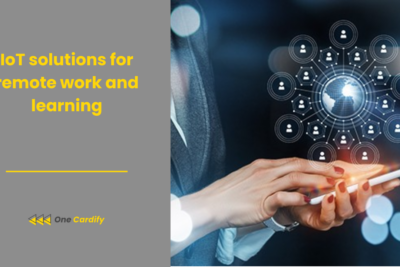
Transforming energy management with IoT
Integrating IOT into energy management in the modern digital world is a huge leap in proper, efficient utility usage. This innovation not only guarantees huge savings in costs but also a considerable reduction in carbon footprints.With the advent of smart technology, the use of IoT devices in our operations helps in harnessing energy from all angles. In houses, apartments, and sprawling industrial complexes, the application of IoT in energy management is transforming the way we monitor, control, and save energy.The present blog post delves into the transformative potential of IoT in redefining energy management practices, identifying the main advantages, challenges, and the future of this technological renewal.
Unveiling the Power of IoT in Energy Management
With IoT in place, energy management is characterized by seamless connectivity and automation. Through the IoT technology implementation in systems and devices, the idea of monitoring and controlling of energy usage in real-time is not only possible, but also attainable.The developments that follow enable obtaining accurate data on patterns of energy usage by pointing out the areas of wastage and allowing for the development of appropriate strategies to reduce inefficiencies. Additionally, when IoT-driven predictive analytics is used, energy demand can be anticipated, and the supply can be managed accordingly to ensure the best use of resources.In addition, IoT-enabled solutions promote usage of renewable sources of energy by easily embedding them in the current power grids, thereby, aiding in the green energy initiative.Hence, IoT driven digital transformation is not a choice, but a future of energy management.
Related content
Challenges in the Path of Innovation
However, despite the mentioned promising progress, the implementation of Internet of Things in the energy management systems is not without a number of challenges. Network of things links many devices to be susceptible to cyber-attacks creating data security and privacy issues as a major concern.Furthermore, the cost of introduction of IoT based solutions is high for small and medium enterprises (SMEs). Technological compatibility is another challenge, and much of the existing infrastructure might need significant redevelopment for IoT applications.Tackling these challenges involves a collaboration among policymakers, technologists, and industry stakeholders to form a friendly environment for the adoption of IoT in the energy management.
However, addressing these challenges requires a partnership among policymakers, technologists, and industry stakeholders to make the environment favorable to the use of IoT in energy management.
Case Studies: Success Stories of IoT in Energy Management
Many success stories emphasize the power of IoT in converting energy management. In this regard, it was even reported that one of the major European cities successfully applied IoT-based smart lighting solutions, leading to 60% energy savings.A facility in the United States utilized IoT sensors to monitor machinery performance and energy usage and this resulted in 20% reduction of energy costs.These instances highlight the concrete advantages of IoT in the improvement of energy efficiency and sustainability.
The Role of Consumers and Businesses in this Technological Shift
Moving towards IoT-powered energy management involves a proactive role of both, the consumers and the businesses. People can also contribute through adoption of smart home solutions that optimize energy use, and businesses in the improved operational efficiency by use of the IoT technologies that minimize the environmental impact.The education and knowledge of the positive influence of IoT on energy management will be the important factor in speeding up this process.
Looking Ahead: The Future of IoT in Energy Management
The upcoming of IoT in control of energy appears bright as new inventions keep coming up at alarming rate. The next advanced wave of enhancements could be AI-based IoT systems that bring higher level of preciseness in energy optimization.Besides, 5G technology spread should improve the performance of IoT devices, increase data transmission speed and data processing.As we move forward, the attention should be paid to developing scalable, secure and sustainable IoT-based energy management solutions that meet the demands of our planet’s changes.
Conclusion
Introducing IoT to energy management denotes a crucial step for us on the way to a better and more sustainable world. IoT opens up entirely new avenues for energy saving, cost reduction, and environmental preservation.During this transition, cooperation between different sectors and constant innovation will be important in overcoming the barriers and maximizing the benefits of IoT in energy management.
IoT devices facilitate real-time monitoring and control of energy usage, enabling the development of efficient energy management strategies.
Key challenges include data security risks, initial setup costs, and the need for tech compatibility upgrades.
Yes, by optimizing energy consumption and reducing wastage, IoT can significantly lower energy costs.
Predictive analytics forecasts energy demand, helping adjust supply accordingly for efficient resource use.
Yes, IoT facilitates the seamless integration of renewable resources into existing power grids, promoting green energy.
Consumer participation is crucial, as adopting smart technologies at home contributes significantly to overall energy efficiency.
The future promises AI enhancements and 5G integration, leading to more efficient, scalable, and sustainable energy management solutions.






Related Posts